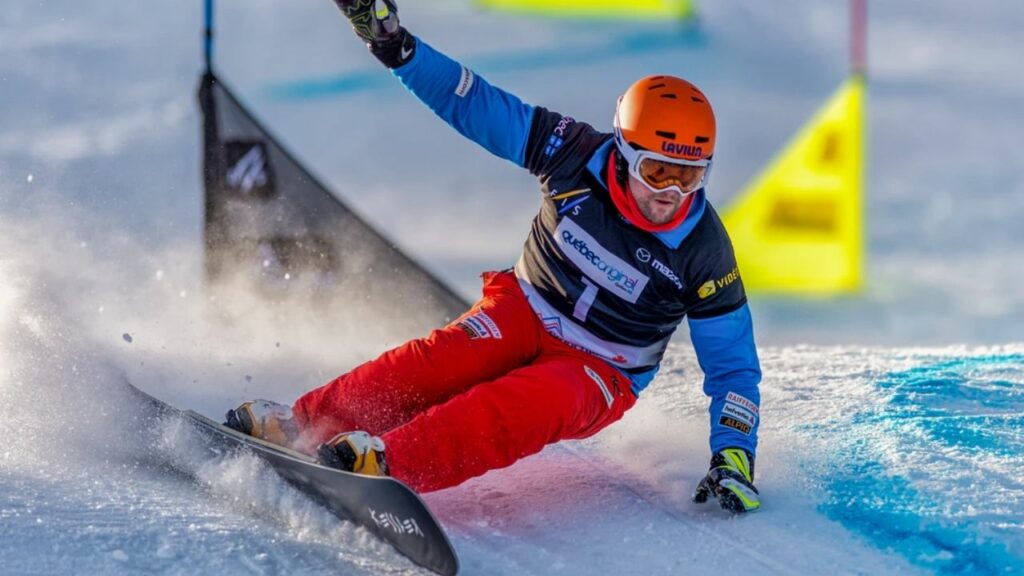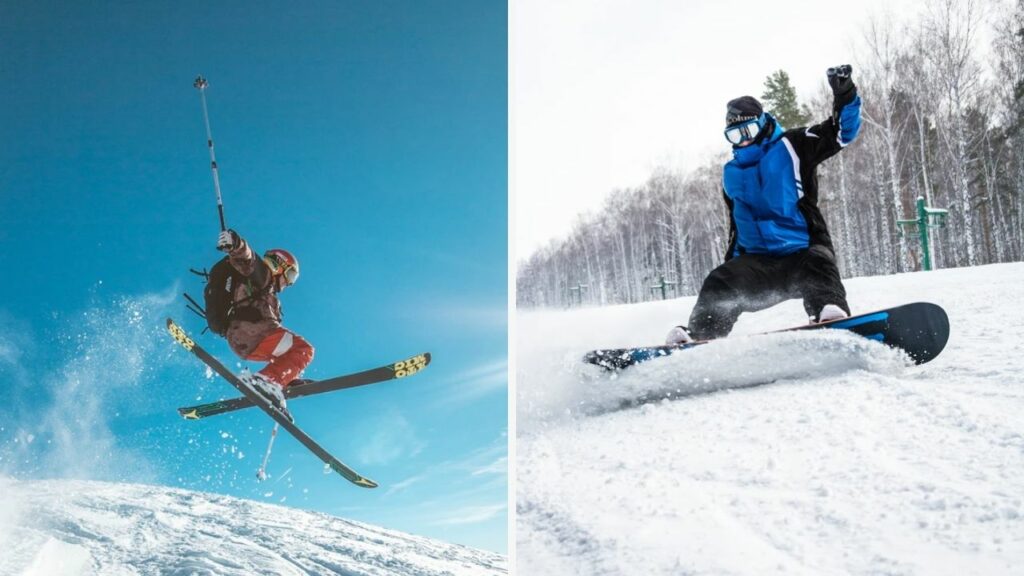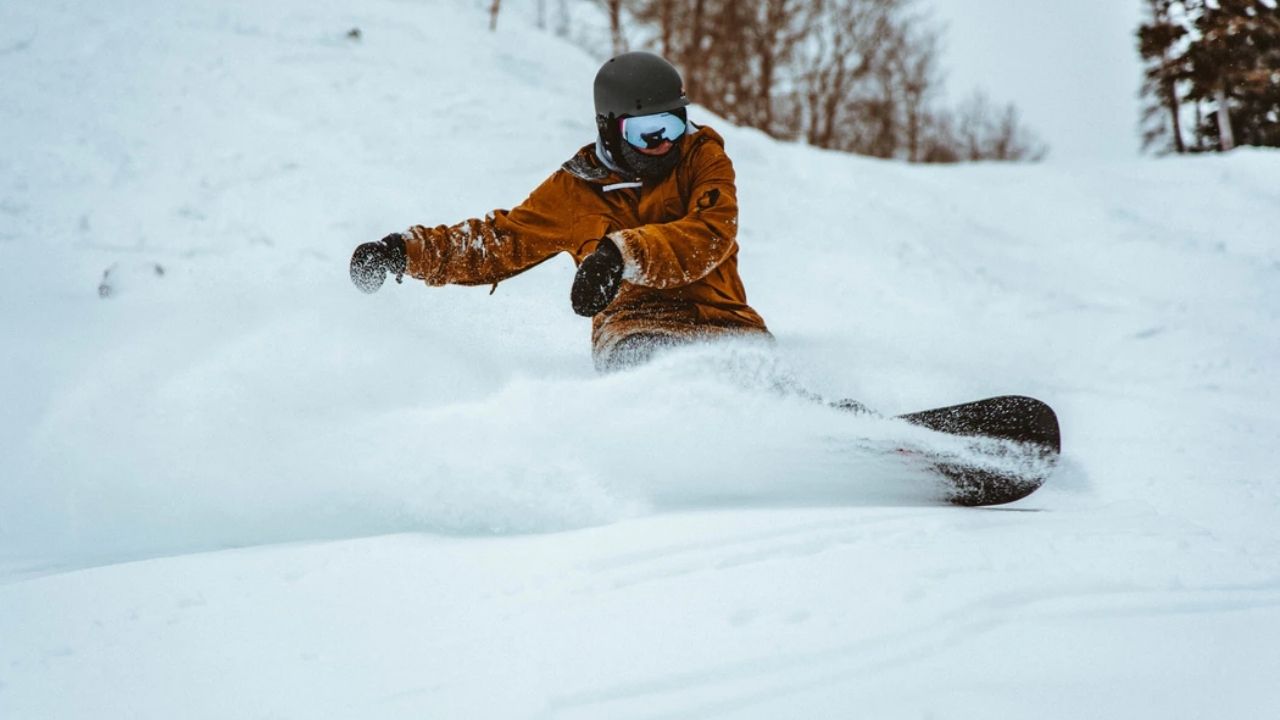Boarding is the perfect activity for those who love fresh powder and dabbling with a bit of speed.
Once you learn the basic stance and are ready to cruise, snowboarding is an experience that you’ll never forget. The cold driving wind and the feeling of being one with the snow, the fierce mountains, and the powdery terrain is one hell of an experience.
It can seem scary or even a tad dangerous from an observor or first-timer’s POV, but all the gear, practice sessions, safety measures, and preparatory powwows beforehand should keep you injury-free and the vibes riding high.
Obviously, I’m not gonna teach you how to snowboard in this guide because you can’t learn something like that from words alone. But I’ll tell you everything you should know about the boarding experience, including the equipment you need, pro tips, safety-related lessons learned, and the best ways to learn snowboarding.
By the end of this guide, you’ll be ready to take on the mountain, not slack-jawed and squirrely like I was for my first ride.
What do I need for first-time snowboarding?
The things that you’ll need for your first-ever snowboarding outing can be divided into three convenient categories.
1. Proper Equipment
Here’s the list of equipment you’ll need:
1. Snowboard and bindings: You can rent a good-quality snowboard with compatible bindings from the on-site rental shops.
2. Snowboard boots: If you’re trying snowboarding for the first time, you should just rent snowboarding boots. But if you’re learning and plan to come back again, I suggest buying your shoes because snowboarding shoes must fit you perfectly, so there’s very little room for error.
3. Snowboard socks: These socks are insulating to make sure your feet don’t freeze. They do it by absorbing the sweat completely.
4. Snowboard helmet: Self explanatory.
5. Snowboard jacket, pants, base, and mid-layers: You’ll need a proper multi-layer snowboarding outfit to not freeze in the snow. The multi-layer outfit has a base layer to absorb sweat and insulated jackets to trap the heat inside.
Here’s everything you need to know about layering in cold temperatures and which materials to use for base layers and mid-layers, respectively.
6. Safety pads: You should buy or rent high-quality butt pads, knee pads, and wrist guards when doing any sort of extreme sport.
7. Snowboard gloves: You’ll need these mitten-like gloves to keep your hands warm and safe.
8. Snowboard goggles: Special snowboarding goggles protect your eyes and help you see where you’re going.
9. Skis and poles: You won’t need these if you’re only going snowboarding. You can also rent them from the on-site rental shops if plans change.
Check out this video to see how to prepare your snowboarding gear before getting waist-deep in some pow:
2. Logistics Information & Essentials
I know, “what are logistics doing in a snowboarding guide?” Well, it’s a beginner’s guide, and you’d be surprised how often virgin snowboarders forget the most obvious things back at the lodge or hotel.
The most basic items you need are sunscreen with good SPF, your wallet, and your phone. You also need reliable info about the snowboarding spot, the routes you’ll be on, and how to get to the lift.
Pro Tip: Book your lift pass online and keep it with you. This will save you from having to go back and forth and stand in lines.
3. Adequate Training & Practice
Good training and practice are crucial for your snowboarding adventure to prevent injuries. So listen to your instructor or whoever is teaching you how to board before riding the slopes.
The last thing you want is to wipe out and or have to suddenly bail. So keep practicing and building your leg strength as much as possible so that you have better control over the board and velocity. But no worries – you’ll know when you’re ready to cruise.
Snowboarding tips for beginners

Here are some tips that I learned from experience:
- Double-check that you have everything from your checklist and all your equipment is working correctly.
- Practice the most basic movements like strapping your dominant leg on the board, standing up, and getting off the lift so that they become a reflex of your body’s snowboarding mode.
- Always keep your dominant foot sideways so that your board is in a horizontal position and climb back up using your other foot.
- Learn to do basic tricks like “one-foot stop,” where you snowboard from your dominant foot and leave the other one unstrapped. That way, you can use it to stop the board when the speed is low.
- The correct way to deboard from the lift is to sit at an angle so that your snowboard touches the snowy ground in an active position, i.e., vertically.
- Choose the stance that suits you best. There are two basic stances in boarding: goofy (where your right foot is dominant) and regular (where your left foot is dominant). It’s not as obvious as picking your dominant writing hand, but it isn’t rocket science. Just think about which foot leads when you skateboard or which foot you kick a ball with.
- Practice! Practice! Practice!
FAQs Answered
1. Is snowboarding dangerous?
According to National Ski Areas Association (NSAA), the incidence of serious head injuries (PSHI) declined from 1 in 4200 days to 1 in 11,000 days between the 1995/1996 and 2011/2012 snowboarding seasons. And, the percentage is even lower this year according to the NSAA paper on “Role of Helmets in Mitigation of Head Injuries.”
You can get hurt while snowboarding and the risk of injuries are higher for beginners than pros. But it isn’t any more dangerous than literally every other extreme sport, and you can avoid all injuries after a decent amount of practice and basic experience.
The risk of snowboarding injuries depends on various factors like the conditions of the mountain, your technique, and, most importantly, your build. It’s a sad truth, but you’re more likely to get hurt if you have a frail physique. This certainly doesn’t mean you should drop snowboarding – just practice a bit more to compensate for the drawbacks.
Remember these things when you go snowboarding for the first time to avoid injuries:
- Listen to your instructor.
- Learn the most basic moves first and focus on them while practicing such as standing up safely with the board strapped.
- Don’t push your body anywhere near its limits until you’re comfortable.
- Check your equipment at least twice before you go downhill.
- Never go downhill in haste; take a second or five if you need to collect your thoughts.
2. Which is easier to learn, skiing or snowboarding?

It is highly subjective whether skiing is easier than snowboarding or not, especially with so many different opinions. While some believe that the first few stages of skiing are easier and you’ll fall less than in snowboarding, others find skiing polls distracting and cause spills.
Really, both sides are right. The initial stages of skiing are technically easier than snowboarding, thanks to the poles. That’s why skiing is recommended for beginners and people with back problems.
In comparison, the progress in snowboarding increases exponentially after the beginner stages. It usually takes individuals only 4-5 lessons before they start snowboarding properly.
What do I recommend? Well, it doesn’t matter. The only thing that matters is which one of the two are you interested in doing? Go with your gut!
3. Can I learn snowboarding in a day?
You can learn snowboarding in a day well enough to take on basic recreational routes. Snowboarding is dangerous like other extreme sports out there, but you can start enjoying it from the get-go if correctly taught.
To get good at snowboarding, you’ll need to exercise and build lots of core and lower-body strength. You have already cleared the first step to learn snowboarding if your leg and calf muscles are rock-solid. You’ll also have to practice the basic stances for standing, getting up, deboarding from the lift, etc.
The next and most important step of all is to listen to your instructor. This may seem obvious, but trust me, you do not wanna be the know-it-all when it comes to snowboarding.
Listen to your instructor’s commands very carefully – the most boring tips will be the difference between a fun trip and one where somebody gets injured. For example, simply putting your board in an upside-down position on the ground will prevent it from accidentally sliding away, building up speed, and hurting someone downhill.
4. How can I teach myself to snowboard?
Learning snowboarding yourself is not impossible, but it isn’t easy either. There are some excellent guides, e-books, and video courses about learning to board – but I recommend YouTube and other video courses because of the sport’s practicality.
Here are two good courses for snowboarding beginners that I personally enjoyed and learned a lot from:
While the first one is a playlist, the second one is a mixture of videos and text by the TheSnowPros organization.
Again, you’ll need to build your leg strength and learn techniques to get good at snowboarding.
Now you have all the information and tips that you need when boarding for the first time. Make sure to use the checklist and remember the tips, have fun on your next snowboarding adventure!

